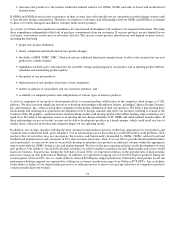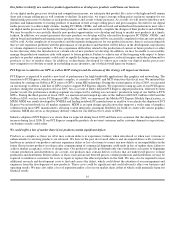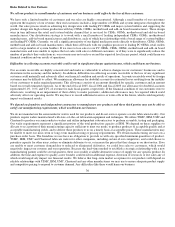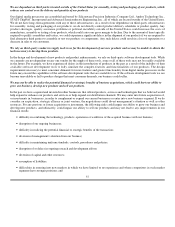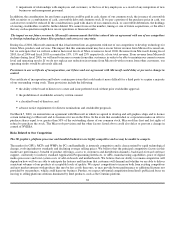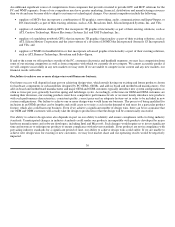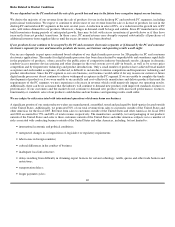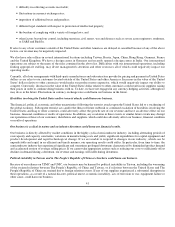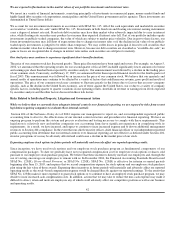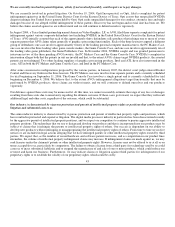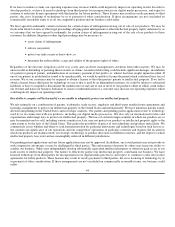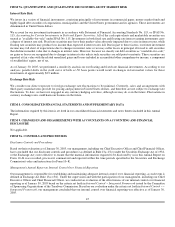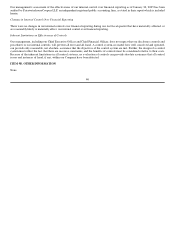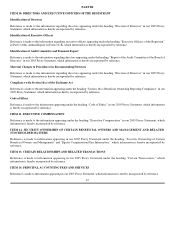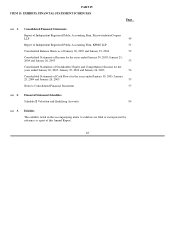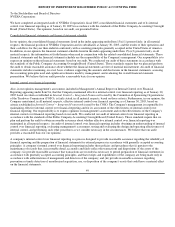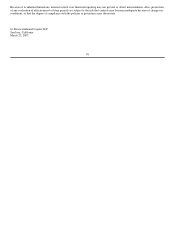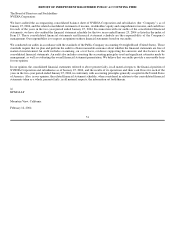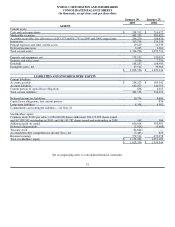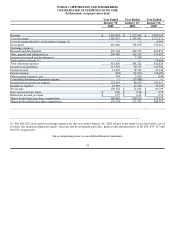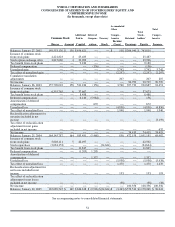NVIDIA 2005 Annual Report Download - page 50
Download and view the complete annual report
Please find page 50 of the 2005 NVIDIA annual report below. You can navigate through the pages in the report by either clicking on the pages listed below, or by using the keyword search tool below to find specific information within the annual report.
If we have to initiate a claim, our operating expenses may increase which could negatively impact our operating results. In order to
develop products, we have licensed technology from third parties for incorporation in our digital media processors, and expect to
continue to enter into license agreements with third parties for future products. These licenses may result in royalty payments to third
parties, the cross licensing of technology by us or payment of other consideration. If these arrangements are not concluded on
commercially reasonable terms or at all, our competitive position and our business could suffer.
We have agreed to indemnify certain customers for certain claims of infringement arising out of sale of our products. We may be
involved in future lawsuits or other legal proceedings alleging patent infringement or other intellectual property rights violations by us
or customers that we have agreed to indemnify for certain claims of infringement arising out of the sale of our products to these
customers. In addition, litigation or other legal proceedings may be necessary to:
• assert claims of infringement;
• enforce our patents;
• protect our trade secrets or know−how; or
• determine the enforceability, scope and validity of the propriety rights of others.
Regardless of the outcome, litigation can be very costly and can divert management's attention from other matters. We may be
unsuccessful in defending or pursuing these lawsuits or claims. An unfavorable ruling could include significant damages, invalidation
of a patent or group of patents, indemnification of customers, payment of lost profits, or, when it has been sought, injunctive relief. If
one of our patents in invalidated or found to be unenforceable, we would be unable to license the patent which could result in a loss of
revenue. We or our customers may be required to obtain a license to the other parties' patents or intellectual property. If we fail to
obtain a license from a third party for technology we use or that is used by an indemnified customer, we could be subject to substantial
liabilities or have to suspend or discontinue the manufacture of and sale of one or more of our products either of which could reduce
our revenue and harm our business. Initiation of claims or indemnification of a customer may increase our operating expenses which
could negatively impact our operating results.
Our ability to compete will be harmed if we are unable to adequately protect our intellectual property.
We rely primarily on a combination of patents, trademarks, trade secrets, employee and third−party nondisclosure agreements and
licensing arrangements to protect our intellectual property in the United States and internationally. We have numerous patents issued,
allowed and pending in the United States and in foreign countries. Our patents and pending patent applications relate to technology
used by us in connection with our products, including our digital media processors. We also rely on international treaties and
organizations and foreign laws to protect our intellectual property. The laws of certain foreign countries in which our products are or
may be manufactured or sold, including various countries in Asia, may not protect our products or intellectual property rights to the
same extent as by the laws of the United States. This makes the possibility of piracy of our technology and products more likely. We
continuously assess whether and where to seek formal protection for particular innovations and technologies based on such factors as:
the commercial significance of our operations and our competitors' operations in particular countries and regions; the location in
which our products are manufactured; our strategic technology or product directions in different countries; and the degree to which
intellectual property laws exist and are meaningfully enforced in different jurisdictions.
Our pending patent applications and any future applications may not be approved. In addition, any issued patents may not provide us
with competitive advantages or may be challenged by third parties. The enforcement of patents by others may harm our ability to
conduct our business. Others may independently develop substantially equivalent intellectual property or otherwise gain access to our
trade secrets or intellectual property. Our failure to effectively protect our intellectual property could harm our business. We have
licensed technology from third parties for incorporation in our digital media processors, and expect to continue to enter into license
agreements for future products. These licenses may result in royalty payments to third parties, the cross licensing of technology by us
or payment of other consideration. If these arrangements are not concluded on commercially reasonable terms, our business could
suffer.
44


